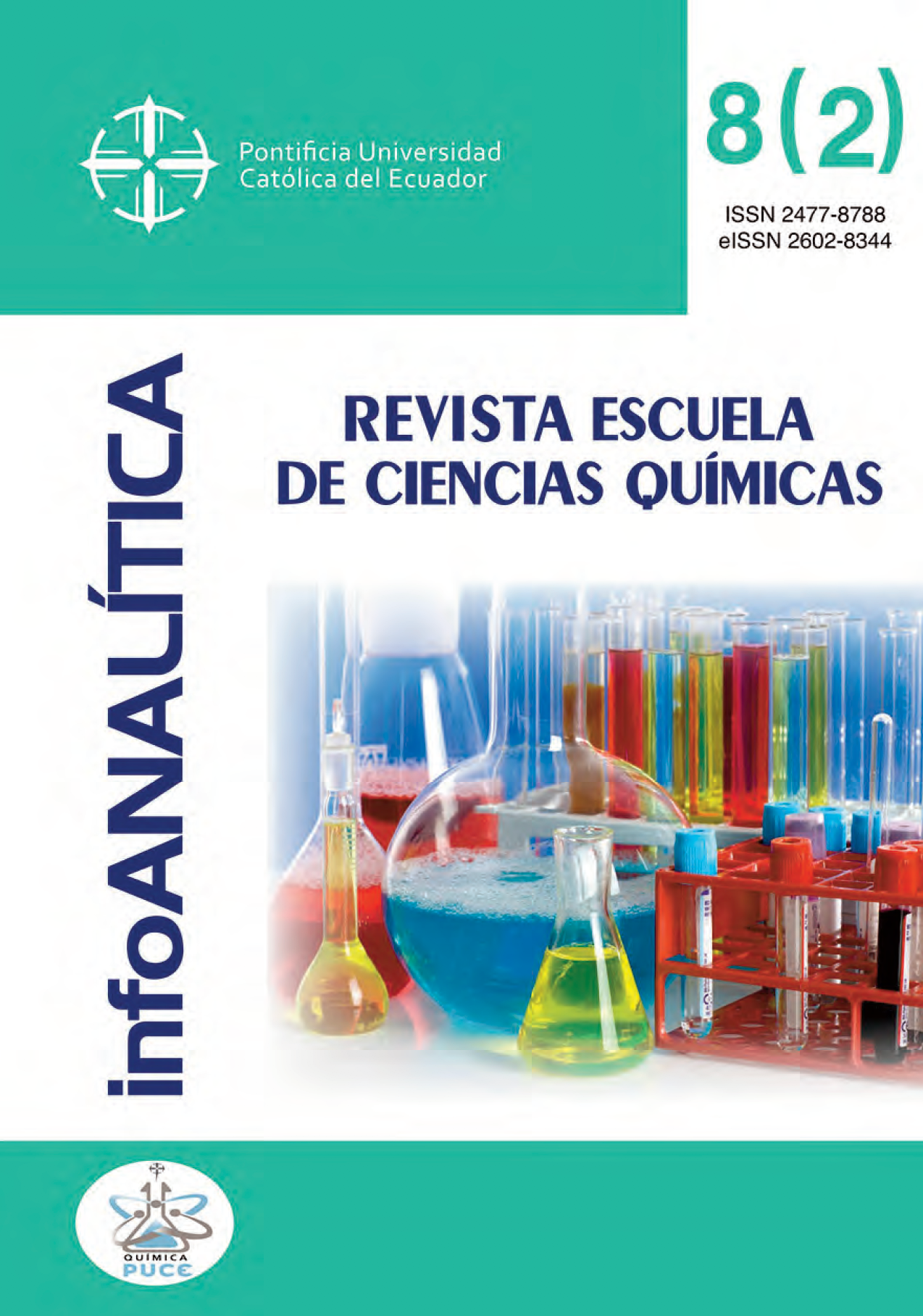Ethnobotanical use and active ingredients of Monnina Crassifolia kunth; polygalaceae
Main Article Content
Abstract
Ecuador is one of the countries with the greatest biological and cultural diversity, ethnobotany represents an approach to the use and management of natural resources; medicinal uses together with food uses play a major role in the well-being of the rural population. Ethnobotanical studies help to identify how plants are related and influence the development of cultures; such is the case of the Angochagua Community where ancestral medicine is used as a way of life. The objective of this investigation was to know the index of use value, relative knowledge of the species and the level of significant use of botanical species in the communities of Angochagua, Imbabura Province. Once the most vulnerable species in terms of loss of ancestral use Monnina crassifolia Kunth was established, chromatographic techniques were used for the isolation and identification of secondary metabolites, resulting in a possible triterpenoid saponin esterified with benzoic acid. The isolated substances were tested against Gram + and Gram - bacteria, as well as against the MAO-A and MAO-B enzyme systems without showing significant biological activity.
Downloads
Article Details
- The authors agree to respect the academic information of other authors, and to assign the copyrights to the journal infoANALÍTICA, so that the article can be edited, published and distributed.
- The content of the scientific articles and the publications that appear in the journal is the exclusive responsibility of their authors. The distribution of the articles published in the infoANALÍTICA Journal is done under a Creative Commons Reconocimiento-CompartirIgual 4.0 Internacional License.
References
Bashir, A., Hamburger, M., Gupta, M. P., Solis, P., & Hostettmann, K. (1992). Biphenyls and a xanthone from Monnina sylvatica. Phytochemistry, 31(9), 3203-3205.
Calixto, J. B. (2005). Twenty-five years of research on medicinal plants in Latin America: a personal view. Journal of ethnopharmacology, 100(1), 131-134.
Cioffi, G., Dal Piaz, F., De Caprariis, P., Sanogo, R., Marzocco, S., Autore, G., & De Tommasi, N. (2006). Antiproliferative Triterpene Saponins from Entada africana⊥. Journal of Natural Products, 69(9), 1323-1329.
Chivian, E. (2002). Biodiversity: its importance to human health. Center for Health and the Global Environment, Harvard Medical School, Cambridge, MA.
Eriksen, B. (1993c). A revision of Monnina subg. Pterocarya (Polygalaceae) in northwestern South America. Annals of the Missouri Botanical Garden, 191-207.
Eriksen, B., & Persson, C. (2007). Polygalaceae. Flowering Plants· Eudicots, 345-363.
Fu, G.-M., Wang, Y.-H., Gao, S., Tang, M.-J., & Yu, S.-S. (2005). Five new cytotoxic triterpenoid saponins from the roots of Symplocos chinensis. Planta medica, 71(07), 666-672.
Grondona, E. M. (1945). Las especies argentinas del género Monnina (Polygalaceae). Darwiniana, 7(1), 1-37.
Germosén-Robineau L. (1995) Hacia una farmacopea vegetal caribeña. Edición TRAMIL 7. Enda - Caribe, UAG & Universidad de Antioquia. Santo Domingo; (4-5)
Hidalgo, P. (2017), Aislamiento e identificación de metabolitos secundarios a partir de
la raíz de la especie Monnina crassifolia (Ivilán) (tesis de pregrado). Universidad
Técnica Particular de Loja. Loja, Ecuador
Kinghorn, A. D. (1992). Plants as sources of medicinally and pharmaceutically important compounds Phytochemical Resources for Medicine and Agriculture (pp. 75-95): Springer.
Lepore, L., Malafronte, N., Condero, F. B., Gualtieri, M. J., Abdo, S., Dal Piaz, F., & De Tommasi, N. (2011). Isolation and structural characterization of glycosides from an anti-angiogenic extract of Monnina obtusifolia HBK. Fitoterapia, 82(2), 178-183.
Lu, Y., Umeda, T., Yagi, A., Sakata, K., Chaudhuri, T., Ganguly, D., & Sarma, S. (2000). Triterpenoid saponins from the roots of tea plant (Camellia sinensis var. assamica). Phytochemistry, 53(8), 941-946.
Mahmood, N., Moore, P., De Tommasi, N., De Simone, F., Colman, S., Hay, A., & Pizza, C. (1993). Inhibition of HIV infection by caffeoylquinic acid derivatives. Antiviral Chemistry and Chemotherapy, 4(4), 235-240.
Olugbade, T. A., Ogundaini, A., Birlirakis, N., Païs, M., & Martin, M.-T. (2000). Petersaponins III and IV, triterpenoid saponins from Petersianthus macrocarpus. Journal of Natural Products, 63(5), 716-719.
Pinto, D. C., Fuzzati, N., Chiriboga, X., & Hostettmann, K. (1994). Xanthone and antifungal constituents from Monnina obtusifolia. Phytochemistry, 37(3), 875-878.
Sandoval, H., (2017). Plan de desarrollo Territorial de la Parroquia de Angochagua. Ecuador, Gobierno Autònomo Desentralizado de la Parroquia Rural de Angichagua. 11-20.
Ranilla, L. G., Kwon, Y.-I., Apostolidis, E., & Shetty, K. (2010). Phenolic compounds, antioxidant activity and in vitro inhibitory potential against key enzymes relevant for hyperglycemia and hypertension of commonly used medicinal plants, herbs and spices in Latin America. Bioresource technology, 101(12), 4676-4689.
Rao, S. R., & Ravishankar, G. (2002). Plant cell cultures: chemical factories of secondary metabolites. Biotechnology advances, 20(2), 101-153.
Rates, S. M. K. (2001). Plants as source of drugs. Toxicon, 39(5), 603-613.
Ruiz, H., López, H. R., & Pavón, J. (1798). Systema vegetabilium florae peruvianae et chilensis: Typis Gabrielis de Sancha.

